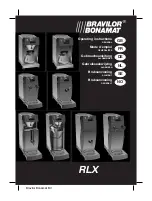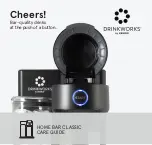
©2012 Terumo BCT, Inc.
Page 7 of 14
PN 306620452
Inspecting the Integrity of the Weld
Caution:
Some residual blood may be encountered under normal operating conditions. Tubing that
contains blood products should be handled appropriately, according to your institution’s SOPs. Residual
blood may be located on waste segments, welded tubing, and clamps.
Step
Action
1
Remove the welded tubing from the clamp slots.
2
Inspect each weld carefully.
Without opening the weld, rotate the tubing 360° and visually inspect it for
alignment. Each weld should be completely aligned.
Caution:
Misaligned welds may or may not be complete and should
be thoroughly inspected for leaks.
Note:
Refer to Fig. 5-8 in the operating instructions for illustrations of
acceptable welds.
Note:
Welding tubing of different diameters may result in welds that
seem misaligned. This is generally acceptable, as long as the weld
opens easily and no leaks occur.
3
Pinch or roll the tubing until the fluid pathway opens.
Caution:
Do not abuse the weld by pulling or repeatedly bending it,
since this could damage the weld.
Note:
If the weld is difficult to open, it could indicate either that the
two sections of tubing that are welded together are incompatible or
that there is an alignment problem.
If the weld is misaligned and has not been opened, it may be possible to
seal the tubing on both sides of the weld and prepare a new weld.
4
Check each weld for leakage.
Warning:
If, for any reason, the weld leaks, the sterility of the product
may be compromised. Follow your institution’s SOPs for evaluating
and managing a potentially contaminated product and for
decontaminating the work environment, if necessary.
5
Carefully remove the waste segments and discard appropriately. Do not
apply pressure or squeeze the segments, because the seals are
temporary.
































